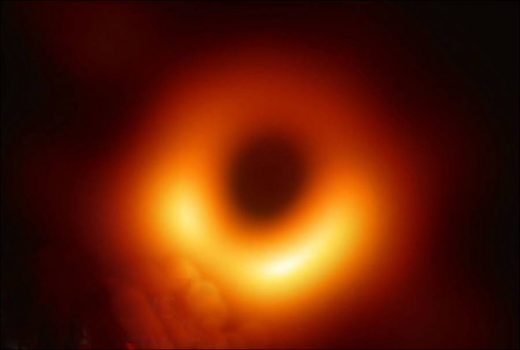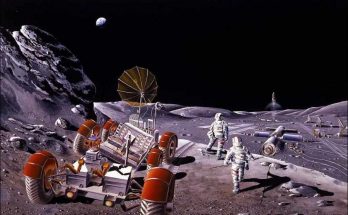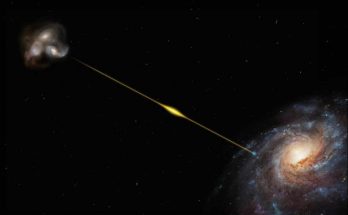May 12, 2022 is one of the most important milestones in the history of astronomy. Because the enigma at the center of the galaxy we live in today has finally been solved. For nearly 100 years, we’ve been wondering what the mysterious radio waves were coming from. For decades we suspected that there might be a black hole out there. For years we had theorized that there was a black hole out there, but we finally saw it today.
This is the black hole at the center of our galaxy. This image is the first photo of his event horizon. The middle shadow has a mass of 4 million Suns. And around it, other planets, our sun and other suns revolve with us. You can also watch them all in the Youtube video.
To make a short definition, Black hole; It is a cosmic celestial body that is in space and has a very, very strong gravitational pull from which even light cannot escape. Black holes, defined by Einstein’s general theory of relativity, are called black because they do not emit light.
How big are black holes?
Black holes can be of various sizes, but there are basically 3 types of black holes. Mass and size of black holes determine their type. The smallest black holes are known as primordial black holes. Scientists think such black holes are as small as an atom but have as much mass as a large mountain.
The most common type of black hole is medium-sized black holes called stellar. The mass of a stellar black hole can be about 20 times greater than the mass of the Sun and can be contained within a ball approximately 16 km in diameter. Dozens of stellar black holes can be found in the Milky Way Galaxy.
The largest black holes are called “supermassive”. These black holes are more massive than the composition of a million Suns and can be housed in a ball approximately the size of the Solar System. Scientific evidence; shows that there is a supermassive black hole at the center of each of the large galaxies. The supermassive black hole thought to be at the center of our Milky Way Galaxy is named Sagittarius A. This black hole has a mass equal to about 4 million Suns and can be placed inside a ball with a diameter of about the size of a sun.
How are black holes formed?
Primordial black holes are thought to have formed in the early universe, just after the Big Bang. Stellar black holes are; They are formed by the explosion (collapse) of a very massive star towards its center. This collapse also causes a supernova, or stellar explosions that explode into space.
For supermassive black holes; Scientists think that these black holes formed at the same time as the galaxies they are in. The size of these black holes depends on the mass and size of the galaxy they are in.
How do scientists know they exist?
Black holes cannot be seen because they have a very large gravitational pull that pulls light towards the center of the black hole. But scientists; they can see the effects of the strong gravitational force exerted on the stars and gas around black holes. If a star is orbiting at a certain point in space, scientists can tell from the motion of the star whether the stars are orbiting a black hole.
When a star and a black hole are orbiting very close to each other, high-energy light is produced. Scientific instruments can detect this high-energy light.
The gravity of a black hole can sometimes be strong enough to pull gas outside the stars and grow a ring around it called the accretion disk. As the gas in the accretion ring spirals into the black hole, the gas heats up to very high temperatures and emits X-rays in all directions. NASA telescopes measure the X-ray beam. Astronomers use this information to obtain information about the properties of the black hole.
Could a Black Hole Destroy Earth?
Black holes do not roam the universe and do not randomly swallow planets. Black holes, like other objects in space, follow the laws of gravity. A black hole’s orbit would have to be very close to the Solar System for it to affect Earth, which is highly unlikely.
If a black hole with the same mass as the Sun were to replace the Sun, the Earth would not be caught in it. A black hole with the same mass as the Sun would have the same gravitational pull as the Sun. And in such a case, the planets currently orbiting the Sun would be orbiting the black hole.
Visits: 159



